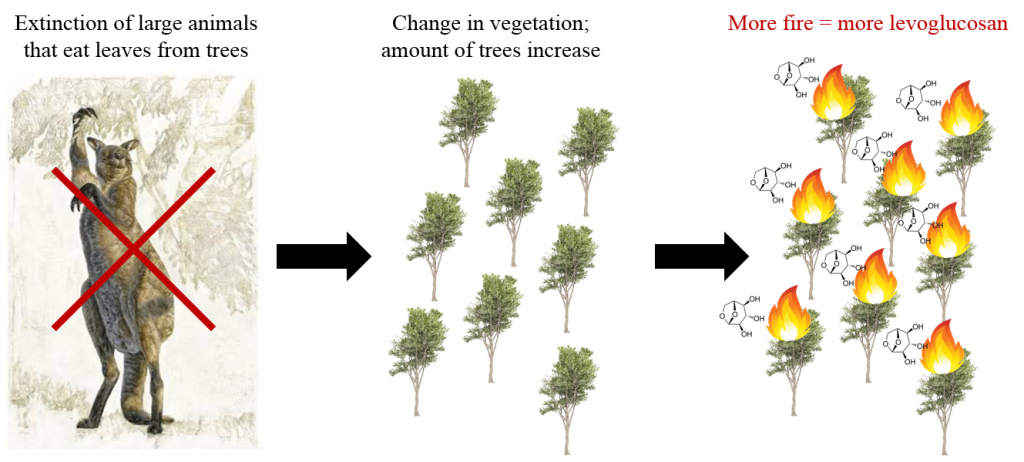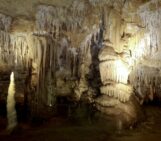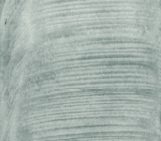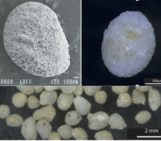
Name of proxy
Levoglucosan
Type of record
Biomass burning
Paleoenvironment
Lake and marine sediments and ice cores
Period of time investigated
Present to approximately 130,000 years ago
How does it work?
Levoglucosan is a molecule that is exclusively formed during the combustion of vegetation at low-temperature. It is therefore considered to be a source-specific tracer for biomass burning. During these fire events, levoglucosan is emitted into the atmosphere and can be transported over hundreds of kilometres. The extent of its atmospheric degradation is currently under debate, however, several studies have demonstrated that levoglucosan remains stable in the atmosphere for several days under most atmospheric conditions. It has been extensively used as a tracer for biomass burning in aerosols in numerous air-quality studies. Levoglucosan can provide information on the occurrence and origin of biomass burning, given that the source area of the levoglucosan is known. So far, levoglucosan is usually interpreted in terms of increased or decreased occurrence of biomass burning.
Recently, the use of levoglucosan as a biomass burning proxy in geological archives has gained increasing interest. Indeed, levoglucosan has been analysed in lake sediments (Battistel et al., 2017), in marine sediments (Lopes dos Santos et al., 2013) and in ice cores (You et al., 2016). It can be transported to these environments by atmospheric transport and by rivers (Fig. 1), where the biomass burning history of the source area is preserved. Seminal advances in the development of this proxy have occurred e.g. on the effect of transport and deposition on the levoglucosan. These molecules are likely transported to the ocean floor attached to marine biogenic particles in the water and do not substantially degrade during settling in the water column (Schreuder et al., 2018). However, they seem to be partially degraded in the top layer of the sediment and therefore changes in preservation conditions over time might influence the levoglucosan record. Other factors that might also influence levoglucosan accumulation are changes in wind strength and direction. This can result in decreasing or increasing transport of levoglucosan to the specific environment where the cores/samples are taken. This illustrates the importance to constrain the factors influencing the levoglucosan record in the context of a multi proxy approach.
What are the key findings that have be done using this proxy ?
So far, levoglucosan studies have mainly focused on reconstructing fire history of the last few centuries and of the Holocene (e.g. Shanahan et al., 2016; Zennaro et al., 2014), but it has also been detected in sediments up to 130 kyrs (Lopes dos Santos et al., 2013). It shows that levoglucosan has the potential to reconstruct fire history on short time scales (i.e. yrs to kyrs) as well as on long time scales (i.e. kyrs to myrs). The fire biomarker is frequently used together with proxies for vegetation and climate to get a better understanding of the interactions between fire, humans, vegetation and climate. For example, Lopes dos Santos et al. (2013) used the levoglucosan proxy in a marine sediment core offshore Australia to reconstruct past levels of biomass burning on the Australian continent over the last 130 kyrs. They also studied biomarkers for vegetation composition and archived information on human arrival and extinction of animals heavier than 40 kg (megafauna). They found out that around 44-42 kyrs, vegetation change was the consequence of the extinction of megafaunal browsers and led to the build-up of fire-prone vegetation in the Australian landscape, as illustrated in figure 2.
This article has been edited by the editorial board
References Battistel D., Argiriadis E., Kehrwald N., Spigariol M., Russell J.M. and Barbante C. (2017) Fire and human record at Lake Victoria, East Africa, during the Early Iron Age: Did humans or climate cause massive ecosystem changes? The Holocene 27, 997-1007. Lopes dos Santos R.A., De Deckker P., Hopmans E.C., Magee J.W., Mets A., Damsté J.S.S. and Schouten S. (2013) Abrupt vegetation change after the Late Quaternary megafaunal extinction in southeastern Australia. Nature Geoscience 6, 627-631. Schreuder L.T., Hopmans E.C., Stuut J.-B.W., Damsté J.S.S. and Schouten S. (2018) Transport and deposition of the fire biomarker levoglucosan across the tropical North Atlantic Ocean. Geochimica et Cosmochimica Acta. Shanahan T.M., Hughen K.A., McKay N.P., Overpeck J.T., Scholz C.A., Gosling W.D., Miller C.S., Peck J.A., King J.W. and Heil C.W. (2016) CO2 and fire influence tropical ecosystem stability in response to climate change. Scientific reports 6, 29587. You C., Xu C., Xu B., Zhao H. and Song L. (2016) Levoglucosan evidence for biomass burning records over Tibetan glaciers. Environmental Pollution 216, 173-181. Zennaro P., Kehrwald N., McConnell J.R., Schüpbach S., Maselli O.J., Marlon J., Vallelonga P., Leuenberger D., Zangrando R. and Spolaor A. (2014) Fire in ice: two millennia of boreal forest fire history from the Greenland NEEM ice core. Climate of the Past 10, 1905-1924.






